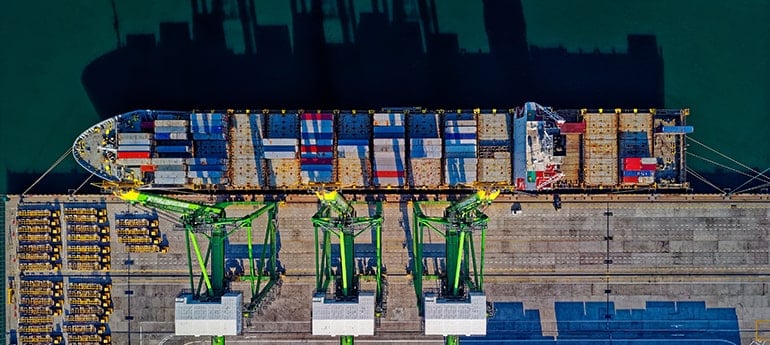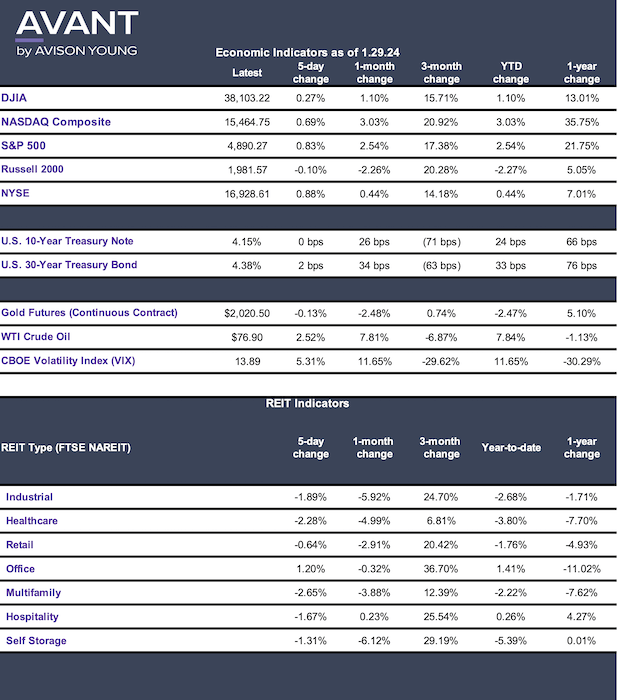Port activity swings between east and west coasts

West Coast ports see a boost, but for how long?
After several years of losing traffic to East Coast ports, the ports of Los Angeles and Long Beach are seeing an uptick in container volume. What are the driving forces and will it endure?
In this issue, we examine how labor unrest, geopolitical issues and efforts by businesses to create more flexible and efficient supply chain strategies are impacting the port system that supports industrial space utilization around the country.
Principal
Head of Industrial Capital Markets
Erik.Foster@avisonyoung.com
+1 312.273.9486
Port activity swings between east and west coasts
The ports of Los Angeles and Long Beach are making a come-back with importers after several years of losing traffic to East Coast ports. With improved labor relations on the West Coast and recent disruptions on East Coast waterways, many businesses are shifting back to the West Coast to tap into more direct routes to Asia.
This shifting activity reflects the lessons learned from the persistent supply chain disruptions during the pandemic. Importers are now focused on diversifying their supply chains and more nimble to allow for quicker reaction when bottlenecks are on the horizon.
The Los Angeles and Long Beach ports remain the top two ports by volume in the U.S, with Los Angeles topping Long Beach in 2023 by about 500,000 TEUs, the standard container cargo measurement.
Overall U.S. port volumes declined in Q4 2023, but the preference for West Coast ports was evident in the latter half of the year. Retail cargo traffic peaked mid-year after businesses stocked up early to protect themselves against supply chain disruption. Many retailers then tapered their import levels for the fourth quarter based on projections of a more moderated holiday shopping season.
While annual container volume at the Port of Los Angeles declined by 12.88% for 2023, the port saw a boost in volume ranging from 5.43% to 19.38% from September through November of 2023. The total volume for the year reached 8.63 million TEUs, according to data from the Port of Los Angeles.
Container volumes at the Port of Long Beach followed a similar trajectory, with a 12.2% annual decline (to reach 8.02 million TEUs), but volume growth from 12% to 24% during September through November, followed by a 30% surge in year-over-year (YOY) activity in December, according to Long Beach Port Authority data.
While East Coast port activity shows similar YOY declines, many have recorded steady increases in volume levels for the past several years as ports embarked on modernization programs and began eating into the West Coast ports’ market share. According to the Wall Street Journal, the ports of Los Angeles and Long Beach handled 50% of U.S. container imports 20 years ago and that share fell to 33% last year.
For 2023, the Port of Savannah recorded a total of 4.5 million TEUs through November, the last date available. Monthly YOY volume decreased all year, falling by 10.3% in November and 18.8% in October, for example, according to the Georgie Ports Authority.

Managing supply chain risk
The two coasts have been competing for cargo traffic for several years as many businesses realign their shipping strategies to increase efficiencies and mitigate supply chain risk. The recent expansion of the Panama Canal prompted many East Coast ports to upgrade their ports to accommodate mega container ships and compete for a wider portion of the import market.
The Port of Charleston, for example, has invested more than $2 billion on port modernization and expansion as South Carolina takes a more prominent role in attracting advanced manufacturing and other growing business sectors. These industries rely on global supply chains and distribution channels, making port modernization an important tool in attracting and retaining those businesses.
These ports expansion projects have brought more cost-effective shipping to some importers, particularly those who are servicing the growing population centers on the East Coast. And, the increasing focus on onshoring and reshoring to alleviate supply chain risk is also driving decisions to import through East Coast ships and then store those goods in warehouses near those growing population centers.
Recently, East Coast port growth has seen some pullback, however, due to the drought that has caused receding water levels in the Panama Canal, as well as geopolitical issues in the Middle East that have disrupted cargo shipping in the Red Sea.
And, the same labor issues that pushed traffic away from Southern California ports last year are now on the radar in the east. Unions representing East Coast dockworkers warn of a possible strike as they move toward contract negotiations later this year.
The West versus East battle for port dominance is likely to continue to ebb and flow as local, national and global issues arise. While the West has been losing seaport trade for years, it will remain a dominant force in facilitating trade with Asia. The East has many locational advantages for businesses looking to keep inventory near growing Southeast markets, but it is not immune to labor and disruptive global issues that impact traffic flow. Regardless which port wins out each year, importer decisions will influence industrial space utilization in these important port markets.
Sources: Bisnow, CNBC, Supply Chain Dive, Wall Street Journal

